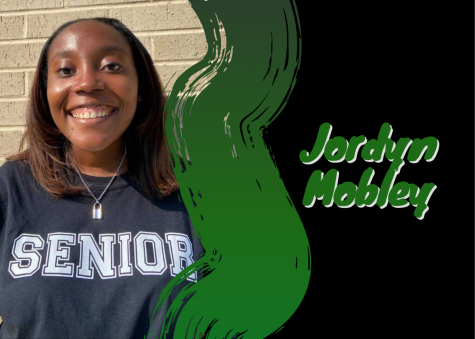On the Frontline: What it’s Like to be a Healthcare Worker During the COVID-19 Pandemic
Photo provided by Kim Mobley
Kim Mobley stands in her nurse’s work station while wearing all of the safety equipment that she needs to go and take care of her patients. The safety equipment is for protective measure in order to block any chance of contracting the virus. The frightning part about this safety equipment is that the nurse’s do not know if it is effective or not. However, it is the only source of protection they have so they are required to use it.
The past few months have been a stressful time for everyone in the world. We are all still learning how to navigate life during the COVID-19 pandemic. However, no one can compare their stress and anxiety to our healthcare workers. Healthcare workers are striving to make sure that people who are affected by this virus receive the best care that they possibly can. I know this first hand because my mom works in the hospital. My mom, Kim Mobley, is a nurse at Emory University Hospital in Downtown Atlanta. She works in the ICU unit of the hospital.
During this time, morale at the hospital is very low.
Even though the nurses are stressed and anxious, they still come together to spread positivity and boost spirits. “While we sit at the nurse’s station, we try to laugh and we try to keep everyone’s spirits high,” said Mobley. “We talk about our families and the places we want to travel after this pandemic is over.”
One of the reasons why healthcare workers are also stressed is because many people in the country and around the world are not taking this virus as seriously as they should. “Because this virus is so new, we don’t have a vaccination or any real treatment for it. We’re learning everything from day to day. You don’t want to be the one person to get it because we will have to perform all of these tests on you,” said Mobley. “The best thing to do is to follow the safety precautions by staying at home and wearing your mask if you do leave your house. I understand that people do have to go outside, but if it’s not absolutely necessary then I would suggest not going out.”
There are multiple procedures that the nurses have to go through before being able to step inside their patient’s room. They have a ten-minute process where they have to put on all of their safety equipment properly.
“If I have a patient who is crashing or their health is declining very quickly, I need to get in the room as soon as possible to do interventions. It’s hard to do that when you have to make sure that you are protecting yourself by putting on all the safety equipment,” said Mobley.
All of the patients in the ICU unit currently are COVID-19 patients. The people on this unit either tested positive for COVID-19 or are currently under investigation for COVID-19 which means they most likely have the virus. The test results can take anywhere from 3 hours to 3 days depending on the time of day and or the day of the week. If the test for the patient comes back negative, they have to move the patient as soon as possible because they could be at risk of becoming infected by the virus.
Testing for COVID-19 is basically the same as testing for the flu. “We swab the nose or you can swab the throat,” said Mobley. “Usually we do both just to ensure the best result.”
Family members are not allowed to visit unless they follow specific guidelines.
“No family members can visit unless the patient is dying. If they’re at the end of their life and their family member wants to withdraw care, which means the family member wants to take them off the ventilator, then one person can come to visit every 24 hours,” said Mobley.
“When that person comes, they have to put on all of the same equipment that we wear. They have to stay in the room for the entire time. They can’t leave to go to eat or use the bathroom. If they leave, they have to stay away for 24 hours.”
Everything they do is a team effort because when someone needs help, they are there for each other.
“If someone feels super exhausted, another person will help them out by going and taking care of their patient.” Another good thing is that many restaurants have been providing the nurse’s food to eat for free while they are working. They also have many counseling services that come by to make sure that everyone is doing okay.
Mobley challenges people to think about themselves and their families.
“Even if you don’t have the virus, you have a mom or a dad. You have grandmothers, grandfathers, siblings, cousins and friends,” said Mobley. “You don’t want to be that person to spread the virus to someone else without knowing because you were interacting with others and you didn’t have to.
During these unprecedented and worrisome times, Mobley still enjoys what she does and wouldn’t change anything about her career.
“I still enjoy it because I feel like I’m helping my patients,” said Mobley. “It’s a lot more stressful now, but I still love helping my patients and being around my coworkers.”
Your donation supports the student journalists of McIntosh High School. Your contribution allows us to cover our annual website hosting costs, to help pay printing costs for "Back to Mac" magazine, and continuing education for staff, such as SNO trainings and MediaNow! editorial leadership training.

Jordyn Mobley is a senior at McIntosh who has been a part of the Trail staff for all four years of high school. She is serving as the Editor-in-Chief of...


